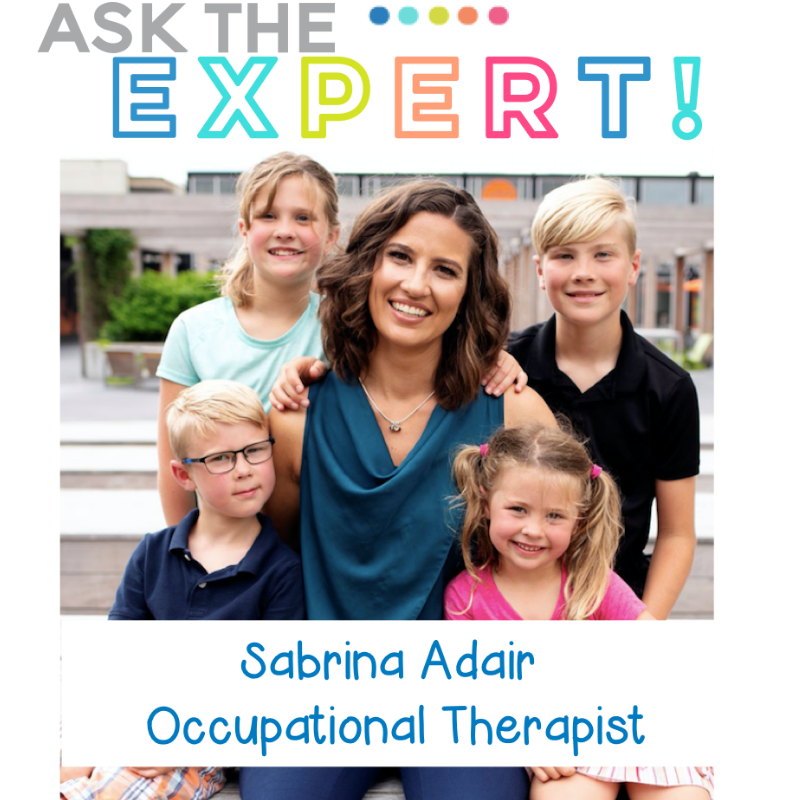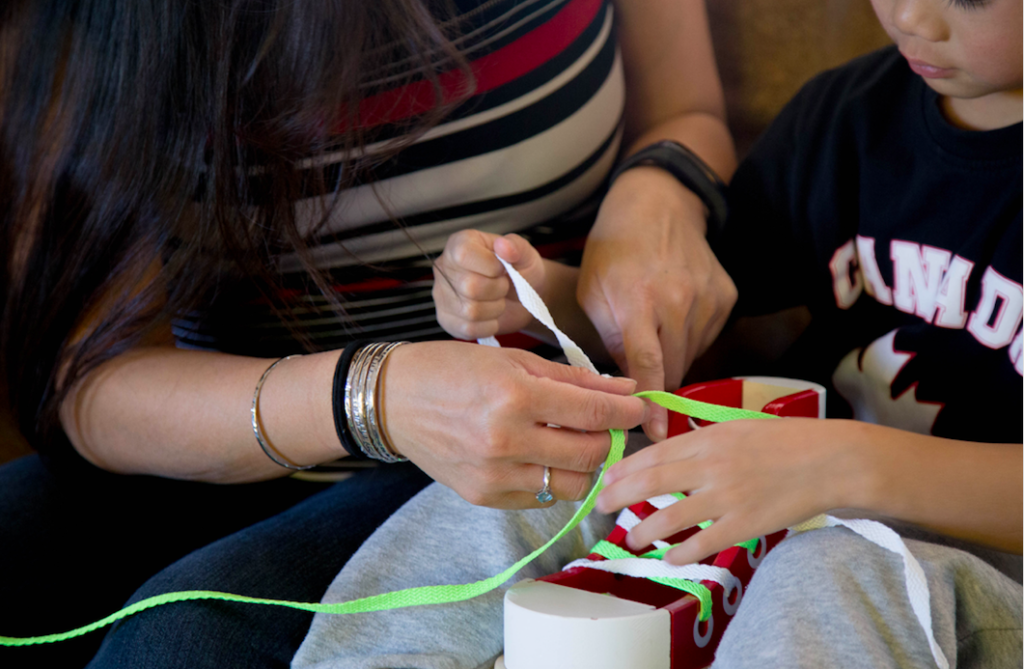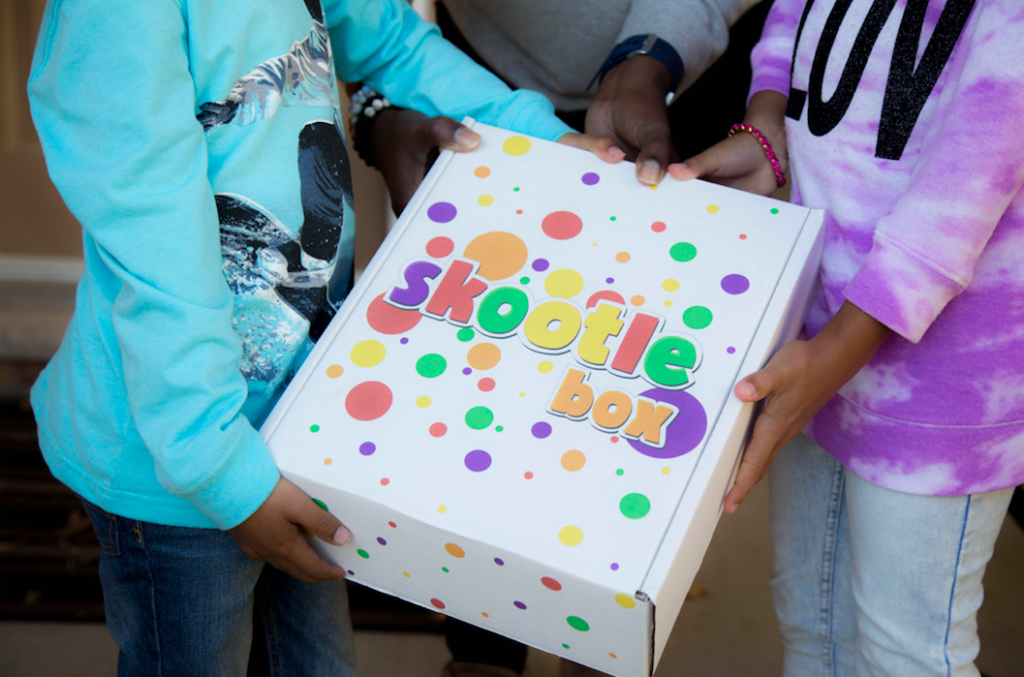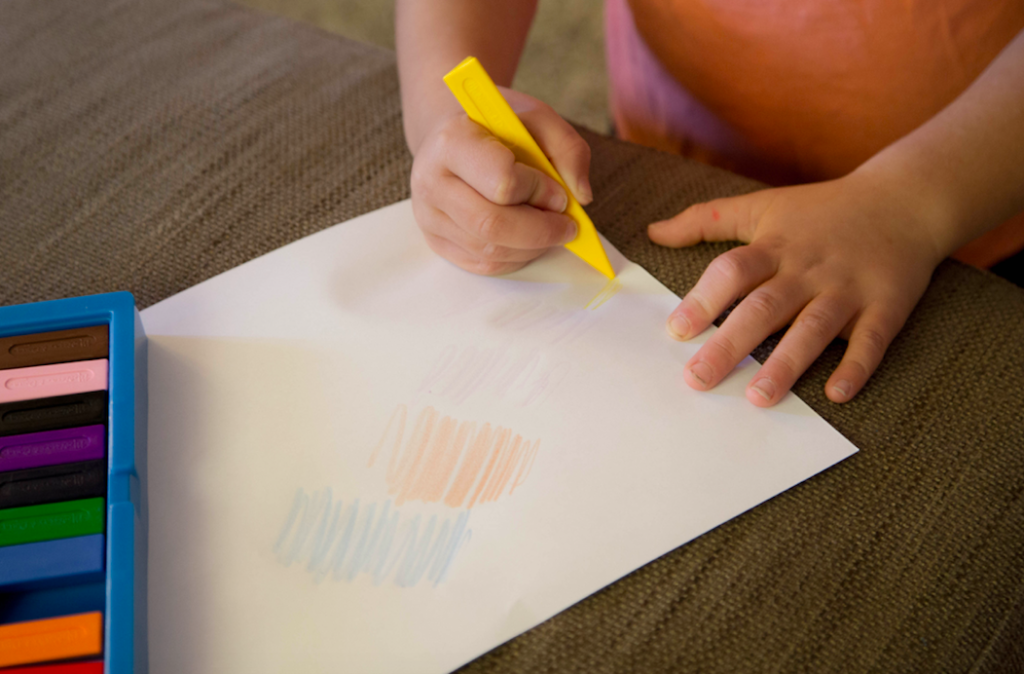This post may contain affiliate links.
I have absolutely loved interviewing so many amazing experts for the Ask an Expert blog series. This interview with Sabrina Adair really opened my eyes to Occupational Therapy and all of the things that an occupational therapist can help with! You are going to love reading it!

Here is a little bit about Sabrina:
Sabrina is a mom of 4 and an Occupational Therapist (OT). She has worked in Occupational Therapy since 2003, serving in both the private and public sectors. She is the CEO and Founder of Enabling Adaptations and a passionate advocate for parent empowerment. She is also the owner of KW Custom Splinting and a Professor at Conestoga College.
In 2019, she started a new company to fill a gap that she noticed in the health care system. Enabling Adaptations was created as an online portal to help give parents and caregivers access to pediatric therapists to ask questions, gain resources and feel empowered to help their children. This option is a more affordable and timely option for parents and caregivers especially those waiting on wait lists for services. Through her own experiences, she understands the struggle of not getting access to services for children and wanting to learn how she can help her child while waiting. This inspired her to create opportunities for others to feel supported in their parenting journey.
What is an occupational therapist?
Occupational therapists (OT’s) help to solve the problems that interfere with a person’s ability to do the things that are important to them – everyday things like self care, going to work or school and any leisure activities. OT’s are like detectives trying to figure out why you can’t do what you want to do; and creating new ways to help you get to your goal. We work with people of all ages.
Using the example of brushing your teeth is a great way to demonstrate how an OT can help you with something you do every day. The occupational therapist would work with you to look at what part of it is giving you troubles, break down that skill and figure out small goals to work on. Perhaps you are having difficulties holding the toothbrush, moving your arm, or you have sensitivity inside your mouth. If you are having difficulties holding the toothbrush, we could look at a larger handled toothbrush or change the grip to make it easier to hold.
How does an OT help children and parents?
Occupational therapists work with children and parents to help children with meeting developmental milestones. These could be physical, social and cognitive milestones. How a child reacts and experiences the world will be different from one child to another. A child’s occupation is to play and eventually they help with self care and then they grow to be more independent.
OT’s , can help anywhere along the child’s developmental spectrum when children are having troubles reaching those milestones. There is no right or wrong way, but we sometimes need to help children to figure out their world and in turn help parents to understand the world from their child’s perspective. For example, if a very young child is unable to sit up, an OT could work on activating some of the muscles that are required to help them sit. The OT works with the parents to incorporate these activities into their daily routines.
If the child is older and they have difficulty focusing in school OT’s can work with the child, the teacher, and the parents to come up with strategies to work on helping them to increase their focus. We can create an environment that gives them the ability to move around, or positioning in a classroom or a sensory diet that helps them balance movement and rest.

What skills should parents and teachers be looking for?
Parents and teachers can identify any areas that a child is struggling with, or if they are not reaching the milestones that are expected. Areas that a child can be struggling with may include:
- Feeding issues with aversions to food (which can sometimes be related to sensory issues)
- Challenges with clothing
- Difficulty with noises
- Abnormal movement patterns such as sitting, crawling or walking
- Difficulty with fine motor activities (Examples: building with blocks, printing, cutting, zippers)
- Difficulty in social situations
If you have any concerns with how your child is doing, you can always reach out and talk to an OT.
What types of things can parents and teachers do with children to strengthen these skills?
Parents and teachers can work with children in many different ways. The key for parents and teachers is to be the detective in figuring out what part of the activity or environment is affecting the child. If your child is having tantrums, look at what is happening before the tantrum. What has the day been like? Try investigating the day from a sensory perspective:
- Sounds: What is going on in the background? Is there music? Lots of kids talking? Is the television on? Things you may not even notice on a daily basis may be sensory stimulating for a child.
- Smells : What smells are nearby? Some children have heightened sense of smell and maybe irritated by the slightest unfamiliar odor.
- Touch: What is the child wearing today? Is someone standing too close?
- Movement: Was the child sitting, moving around, or running?
- Visual: What kind of lights are on? Was there a lot of visual distractions?
These are just a few examples of questions to ask yourself about the situation. From what you discover from looking at each scenario, you may start to see consistency in what the environment is like for your child. My children, like many others, tend to get a lot more fussy when it is close to dinner time. We often will put out some apples or some veggies for them to snack on just before dinner so that they are getting some healthy snacks to curb their “hangryness.” Once you realize what your child reacts to, you can find solutions to help your child to calm themselves down. This is called self-regulation. This is different for everyone, but go through the same process as above to figure out what makes a child feel the most calm or regulated.

What resources are available to help?
There are lots of resources available in different communities. If your child is in school, reach out to the school. If your child is in preschool, there may be an early childhood program or private clinics in your community. In the area where we live there are long waits for therapy in the school and the clinics can be costly. I own a company that offers support to parents who have questions about their child’s development and are looking for ways to start with helping their child navigate their environment. I also create a subscription box for kids called the Skootle Box. It contains 4-6 fine motor or sensory activities and a guide to teach parents how to break down each activity to their child’s skill level and help them build up coordination, strength, fine motor skills and uses a multi sensory approach.

Reader Questions:
Each week on IG, I announce the expert and give you a chance to submit your questions! Here are the chosen reader questions:
What are some non-disruptive sensory activities my child can do to self regulate in the classroom?
What works for kids in the classroom is going to be different for each child. A few suggestions that I would try:
- A wiggle cushion
- A chair band for your child to play with their feet
- A fidget ring
- Flexible pencils
- Pencil toppers
- Gum (uses energy to chew which helps with the focus, especially during writing activities)
These are all quieter activities. If possible make sure they also have movement activities integrated into their day to allow breaks.
What are some good things to do with a toddler/preschooler to help develop fine motor skills?
Fine motor skills actually get stronger with the development of good core stability. I often get my little ones to practice activities like crab walks or wheelbarrow walks on their hands to help prepare the body for holding a pencil. I would then recommend activities like play dough that can help to build hand strength. Try to pull the play dough apart, make flat pancakes, make worms and then pinch the worms with your index and thumb. You could then try to draw lines in the play dough with your fingers. These are all great activities to start building up more fine motor skills.
After these kinds of activities, you can start using these crayons to promote the appropriate grip on a pencil. For more ideas follow me @skootlebox, which is my subscription box for children that builds fine motor and sensory regulation skills.

What scissors do you recommend for little ones?
Depending on the child, I often start with these scissors. They have a spring that can be added to help to open the scissors. Often times when children are learning to use scissors, they can close them but have a hard time pulling them back open. Once your child has mastered the closing, you can remove the spring. Remember that using scissors is the first step. The second step is to hold a paper and try to cut with scissors; which adds in bilateral coordination. Always start by holding the paper for your child while they are developing the skills.
Want more from Sabrina?
I love how passionate Sabrina is about helping parents and teaching others about occupational therapy. You can learn more about Enabling Adaptations on their website or check them out on Instagram!
Check out all of the Ask the Expert posts:
Ask a Speech Pathologist
Ask an Online Party Planner
Ask a Disability Advocate
Ask a Parenting Coach
